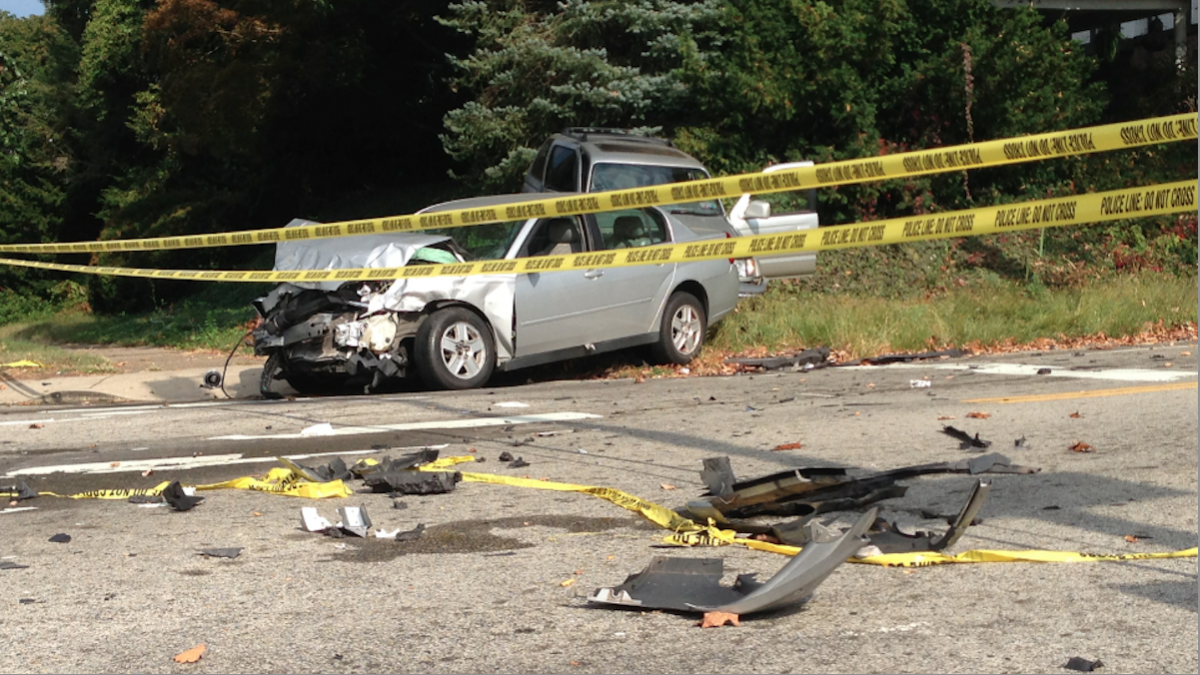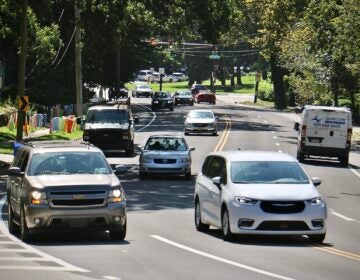East Falls asks PennDOT for ‘radical’ changes to make Henry Avenue safer

In East Falls, a long controversy around a very short stretch of road is reaching its crescendo.
Back in 2012, PennDOT released an initial report for improving safety along the six-mile long corridor that runs from the top of Strawberry Mansion up to the Cathedral Village retirement community in Roxborough.
But as soon as PennDOT’s plans became known, the East Falls Community Council’s Traffic Committee made it clear that their community wouldn’t simply accede to any old strategy laid out by the state. They rejected the modest plan, saying they wanted cars travelling through their community to move substantially slower (perhaps even at the speed limit of 35 miles an hour). PennDOT’s 2012 recommendations were not likely to generate that effect.
Currently several intersections on Henry Avenue are prone to car crashes—some of them fatal—because they are not designed to induce slower speeds, even in places where pedestrians are likely to cross. The road is four lanes and enjoys few traffic calming features, despite cutting through the heart of Philadelphia University’s campus. The intersection of Schoolhouse Lane and Henry is particularly nasty. Based a review of crash data from 2010-2015, it is among the three most dangerous intersections in the Fourth Council District, suffering a fatal crash as recently as May.
As NewsWorks reported in 2012, the Traffic Committee lobbied for the installation of roundabouts at this intersection and several others to slow the speed of onrushing traffic. Some members also favor a “road diet,” which would reduce the number of lanes to one in each direction, while adding a bike lane separated from the car traffic by a parking lane. PennDOT agreed to consider their proposals. In February it released a $250,000 “Alternatives Analysis Report,” which considers five different options for the 1.4-mile stretch of Henry Avenue that carries 23,000 vehicles a day.
At the beginning of this summer PennDOT officials met with the Traffic Committee to discuss its findings. The agency concluded that the options put forward by community members were infeasible because they would either slow the flow of traffic too much, require the purchase of private property on the roadsides to accommodate the roundabouts, or both.
The most vocal members of the traffic committee quickly disputed these findings, including Larry Shaeffer, cofounder of PhillyCarShare, who has been advising the East Falls Community Council. They contest that PennDOT’s modeling used faulty metrics, which overstated the cost and size of the roundabouts and overestimated the delaying effect they would have on commuters.
“I don’t want to dump on them, they’re well meaning, and I hope they will take us seriously when we say, yes, we really want this radical change,” says Meg Greenfield, a member of the Traffic Committee. “They asked if we didn’t care that it would be slower. We said no, we want it to be safer. Do this as a model for the future instead of sticking to the status quo. Make this something special that you can hold out to people as an ideal for the future.”
Instead PennDOT recommended the most conservative option, which would mean installing new signaling and a variety of safety tools, like curb bumpouts, to slow traffic and allow pedestrians greater safety at intersections. The report commissioned by PennDOT contends that this option would be the best balance between the needs of drivers, pedestrians, and bikers, noting, “Overall vehicle capacity through the corridor would be maintained.”
At a June meeting, the Traffic Committee pushed back again. They demanded that PennDOT reconsider the report and again delay work plans. (Construction was originally supposed to start in 2015.)
That’s exactly what PennDOT is doing. Those familiar with the agency and the larger state of the field say this willingness to engage in an extended discussion is a sign of the changing times and willingness to at least consider priorities beyond rapid passage of automobiles.
“If this happened five years ago, 9,999 times out of 10,000 the DOT would have said fine, we give up, we can’t get your buy in, [you] would have had to take them to court,” says Gary Toth of Project for Public Spaces and former employee of the New Jersey Department of Transportation. “That’s not happening here. The facts they have stopped and are offering the community an opportunity to bring new ideas to them to me seems like a very positive sign.”
From PennDOT’s perspective, the Henry Avenue project in East Falls isn’t different because of a changing bureaucratic culture or the shifting priorities. The PennDOT consultant who is at the head of the project, Bruce Masi, says he’s worked on two other projects in Philadelphia, on Olney and Erie avenues. Neither received this level of community scrutiny.
“Our behavior is different because the amount of input is different,” says Masi. “We hire very good professionals in this industry, we have good faith in our analysis, but I don’t have a problem with relooking at it and seeing if certain assumptions could be reconsidered. We’re willing to do that.”
But he doesn’t sound particularly convinced that the original conclusion was so far off.
“Henry Avenue is a major vehicular corridor in that region,” says Masi. “Some people on the East Falls Traffic Committee view that as a local road. That really isn’t its function.”
Review of Henry Avenue’s Alternatives Analysis report, taking into account the Traffic Committee’s critique of the metrics used, isn’t expected to be released until early 2017. Now PennDOT expects construction along this 1.4-mile stretch of road to begin in 2018, three years behind schedule.
DATA SOURCES: PennDOT, DVRPC, Bicycle Coalition of Greater Philadelphia
WHYY is your source for fact-based, in-depth journalism and information. As a nonprofit organization, we rely on financial support from readers like you. Please give today.







